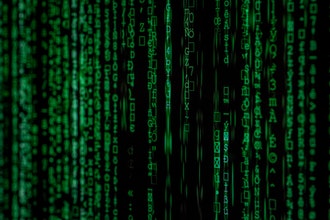Viruses – Biological and Technological
Whether it be in extreme times such as now, for social isolation and lock down or for the more general need for staff to work from home, appropriate robust IT systems need to be in place to effectively work remotely.
With current suggestions around working from home to minimise the impact of COVID-19 it has been interesting to have had different conversations with organisations who are at varying levels of ability in being able to work remotely.

There are IT infrastructure costs required to enable staff to work remotely. Does each person have a laptop or an appropriate mobile device? Do we allow our staff to use their own personal computer (BYOD – Bring Your Own Device) to access organisational systems? Is there sufficient internet access?
One nonprofit I spoke to recently faced the issue that not all staff have a work laptop. So even if they want to, they can’t send all staff to work from home. Where does the budget come from to buy these laptops in a time of crisis?
Remote Working
At Strategic Grants, most staff are teleworkers. We work from home, across New Zealand, Australia – we even have an outpost in France! We utilise ‘in-the-cloud’ software systems that mean we can access our corporate data from anywhere there is an internet connection. Systems such as Microsoft Office 365 and Sharepoint, Google Docs suite, project management tools like Asana, the Strategic Grants Intranet allow us to access our systems, documents and processes. There are many solutions available for remote information systems. The GEMS calendar can be accessed from anywhere. I was recently emailing a client who was working from Berlin, updating GEM Portal.
But it’s not always that simple. I spoke to an organisation recently who works in the health system. The nature of their clinical data including personal health records means that their IT systems are kept secure by not having them connected to the internet. During times of social isolation, how can medical researchers work from home if they can’t access the systems remotely?
Biological and Technological
While we are presently seeking to protect ourselves from biological viruses like the current COVID-19 concern, from an information technology security perspective we also need to be hyper aware of unseen technological viruses and other cyber security concerns. No IT system on the internet can be guaranteed 100% secure and is always at the risk of cyber-attack. Recently a regional health service in Australia was brought down by a cyber-attack, to the point of staff having to revert to paper trail processes. This is a significant and real risk in the business world today and one which won’t be going away. Unseen to most of us is the continual cyber-attacks that are occurring 24 hours per day across the internet. Like COVID-19, the technological virus is invisible to our eyes as it spreads.
Through any time of unknown and uncertainty, there are always positives. Causing an organisation to rethink their IT policy and capability about how to work remotely and how to protect corporate and private information from technological virus attack is a good thing. While you might not be ready for this event, no doubt there is another one coming, for which you can start planning now.
If you would like to talk to someone at Strategic Grants about how we work remotely, we’d be happy to chat – electronically or in real human voice!
And here is a link to some Capacity Building funding that are currently available. We will continue to update the Pro Bono Grants Page.
If you are facing significant challenges in enabling remote working conditions we suggest speaking to your current funding partners to see if they can help and also be sure to check out Connecting Up’s technology upgrades technology upgrades
